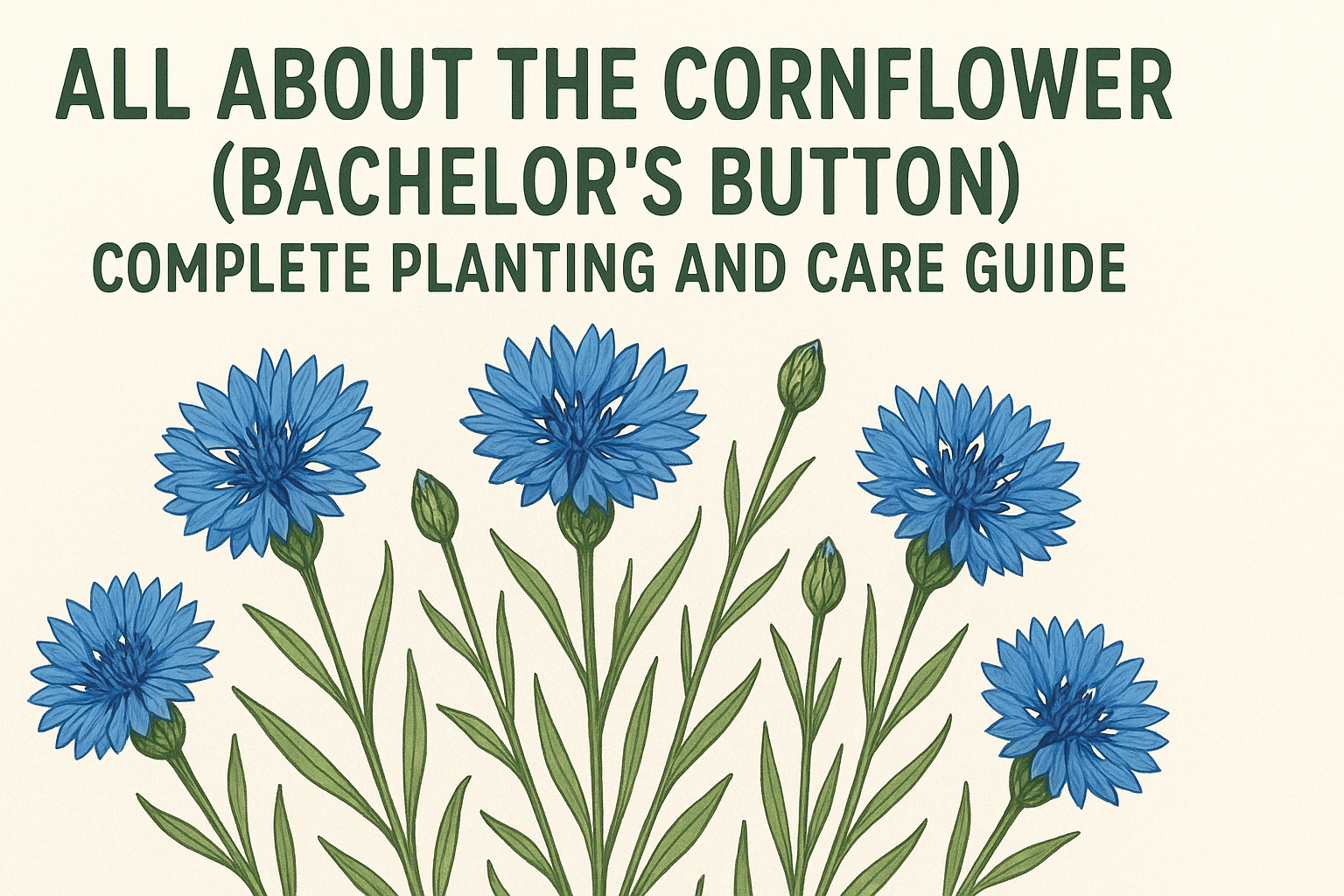Adding flowers to your garden or around your house can make your landscape better than it usually is, which is why gardening is always the perfect hobby for people who wish to add vibrancy and charm to their environment. Now, if you are looking for the best flower that you can add to your garden, then we have the most brilliant option for you – Cornflower. Also known as Bachelor’s button, this flower is an annual wildflower that resembles carnations, only smaller.
One of the biggest strengths of Cornflower is the fact that it can be grown in any type of conditions, and if you are interested in growing this flower, then this article will tell you all about Cornflower care and planting. Get ready to add these beautiful and mesmerizing flowers to your garden to turn your surroundings into something entirely magical.
| Common Name | Cornflower, bachelor’s button |
| Botanical Name | Centaurea cyanus |
| Family | Asteraceae |
| Plant Type | Annual |
| Mature Size | 12–48 in. tall, 10–12 in. wide |
| Sun Exposure | Full, partial |
| Soil Type | Moist, well-drained |
| Soil pH | Alkaline |
| Bloom Time | Spring, summer |
| Flower Color | Blue, purple, pink, white, red |
| Hardiness Zones | 2–11 (USDA) |
| Native Area | Europe |
Growing Cornflowers – Planting and Care Instructions
Now that you have the basic information related to Bachelor Buttons (Cornflowers), take a look at the basic instructions that you need to keep in mind to make sure that your flower thrives well.
-
Light
Cornflowers are fond of full sun; however, they grow the best if they receive some shade in the afternoon. If the plant stays in shade all day, it will result in leggy growth, and the blooms will flop.
-
Soil
The flowers grow well in rich and well-drained soil that is a little alkaline. If you are into technicalities, then you need to get soil that has a pH of 7.2 to 7.8. If you observe that your soil is acidic, then you can add crushed limestone to it to balance it out.
-
Water
The flowers require 1 inch of water every week, especially during the hottest months of the year. However, it is important to make sure that the soil dries out between waterings. Do not let the soil dry out completely, as this will result in the flopping of the flower.
-
Temperature and Humidity
Temperature-wise, blue cornflower tolerates light frost and a hot summer day. Now, it just flourishes in 60-80 degrees F. While flowering maturity may require a bit of heat, 85-95 degrees F. It prefers an average humidity of 30-50 percent. Be sure to take to the garden once humidity builds up because fungal diseases are common in the atmosphere for this plant.
-
Fertiliser
If the soil indeed turns poor, fertilize your cornflower once a month with diluted liquid manure or mushroom, or humus compost teacake. Fertilizing just starts from early spring when little plants attain six inches tall till the summer season. In most cases, mixing in a bag or two of compost before sowing the plants should suffice for the entire season.
With these basic care instructions, you can ensure the successful growth of your plant. We also recommend visiting the website Yourhomify to learn about more Cornflowers and other plants.

